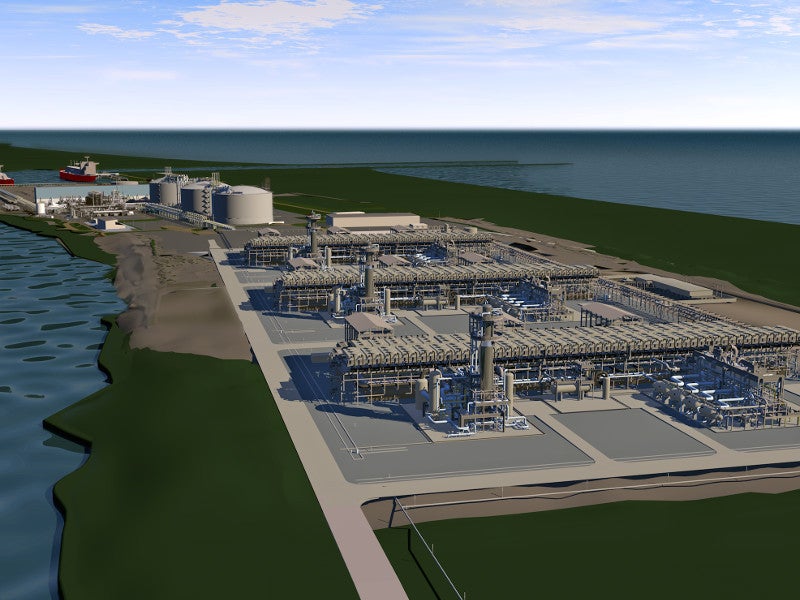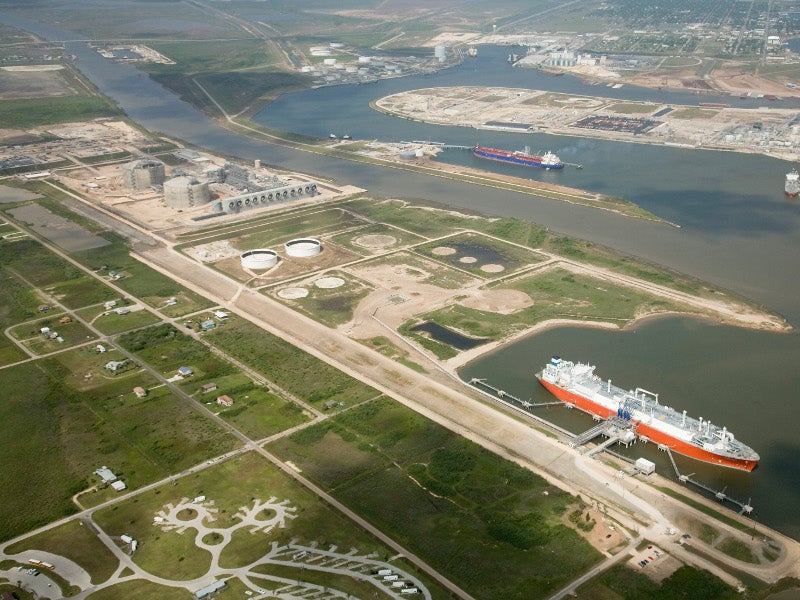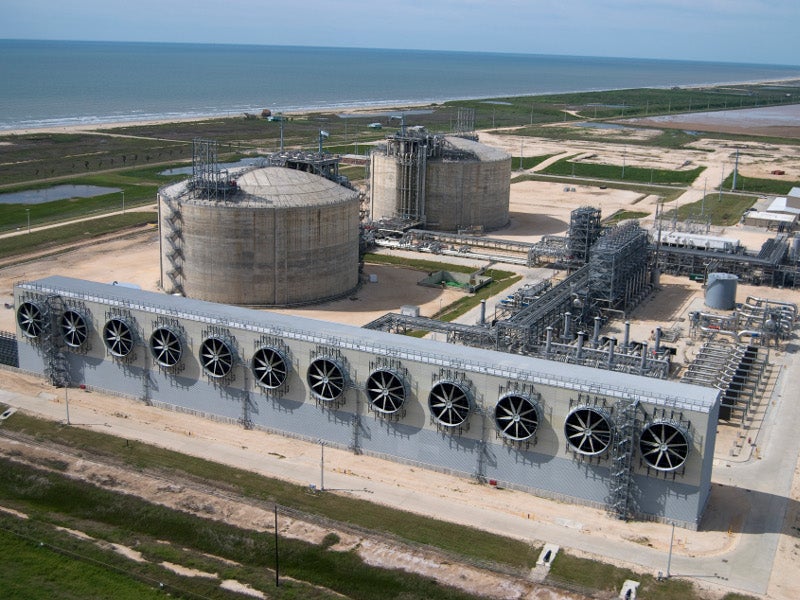The Freeport LNG export terminal is a 20 million tonnes per annum (Mtpa) natural gas liquefaction and export project being developed on the Quintana Island near Freeport, Texas, US.
The first liquefaction unit of the four-train LNG facility commenced commercial production in December 2019, while the train two started commercial production in January 2020.
The train three, currently under construction, is expected to begin operations in May 2020, while the train four is scheduled to begin commercial production in 2023.
The total cost to develop the Freeport LNG export facility is estimated to be £10.6bn ($14bn).
FLNG Liquefaction, a joint venture of Freeport LNG Expansion (50%), Osaka Gas (25%), and JERA (25%) owns and operates the project.
Freeport LNG project history
The site of Freeport LNG export terminal earlier housed a two billion cubic feet (bcf) per day LNG import and regasification facility installed with two 160,000m³ LNG storage tanks.
A company named Freeport LNG Development was established in 2002 to build and operate the Freeport LNG import facility and supply gas into the domestic pipeline system.
Construction on the LNG import and regasification facilities was started in 2005, while commercial operations began in 2008.
The company launched the liquefaction and export project in 2010, following the shale gas revolution in the US.
Freeport LNG project development details
The US Department of Energy (DoE) approved the first license to export 511bcf/year of natural gas from the Freeport facility to the Free-Trade Agreement (FTA) countries in 2011, followed by a second similar license in 2012. The export license for 656bcf/year of gas to non-FTA countries was approved in 2013.
The front-end engineering and design (FEED) for the export facility was completed and the engineering, procurement, and construction (EPC) contract for the first two liquefaction trains was also awarded in the same year.
The US Federal Energy Regulatory Commission (FERC) approved the Freeport LNG export project in 2014. Construction on the first two trains was started following the final investment decision (FID) in the same year.
Freeport LNG achieved financial closure and started construction of the third LNG train at the facility in 2015.
FERC and DoE approvals for the fourth liquefaction train were received in May 2019, while financial closure for the same was secured in September 2019.
Although the first LNG train started commercial operations in December 2019, initial production had started in August 2019, while the first LNG cargo from the facility was shipped in September 2019.
Freeport LNG plant site and infrastructure
The Freeport LNG export terminal site is located approximately 10km away from Freeport Port’s sea buoy and features a 600ft-wide ship channel.
The terminal is located in close proximity to an extensive network of intrastate and interstate gas pipelines.
The Freeport LNG export facility utilises the existing LNG storage tanks, cargo transfer lines, marine dock, pipeline connection, as well as the metering and underground gas storage facilities that were built as part of the Freeport LNG import terminal project.
The LNG processing plant will consist of four liquefaction trains along with associated gas pre-treatment facilities to remove impurities from the feed gas.
Each gas pre-treatment train will be equipped with regenerative thermal oxidiser from Eisenmann Corporation, as well as an integrated scrubber and dual-field wet electrostatic precipitator for efficient removal of contaminants from the feed gas.
The LNG produced in each liquefaction train will be transferred to the storage tanks via a pipe-in-pipe system.
The boil-off gas (BOG) generated at the liquefaction trains will be compressed and sent back via a 12in-diameter pipeline to the pre-treatment facility to provide process heating for the pre-treatment trains.
Liquefaction technology
The Freeport LNG project utilises Air Products’ C3MR (AP-C3MR™) propane-precooled mixed-refrigerant liquefaction process.
The propane and mixed-refrigerant compressors of all liquefaction trains at the facility will use General Electric 75 MW motors with variable frequency drives.
Freeport is claimed to be one of the first commercial-scale electric LNG liquefaction (eLNG) plants in North America to use an all-electric compression motor drive solution.
LNG off-take from Freeport
Approximately 13.5Mtpa of LNG has been contracted under 20-year tolling agreements with Osaka Gas, JERA, BP, Toshiba America LNG (now Total), and SK E&S LNG, a company based in South Korea.
Singapore-based company Trafigura has also agreed to purchase 0.5Mtpa of LNG under a three-year sale and purchase agreement starting from 2020.
Financing for the Freeport LNG train-4 expansion
Freeport LNG announced a loan agreement for the Freeport LNG train four with Westbourne Capital, a global infrastructure debt investment manager based in Melbourne, in September 2019.
Westbourne Capital and its co-investors will provide £798m ($1.05bn) of mezzanine loan under the agreement.
Contractors involved
A joint venture of CB&I (now McDermott) and Zachry Industrial was awarded the EPC contract for the first two trains of the liquefaction project in 2014.
Chiyoda International Corporation joined the McDermott- Zachry joint venture for the EPC of the third liquefaction train in 2015.
KBR was selected as the EPC contractor for the fourth train at the Freeport LNG export facility in May 2019.





